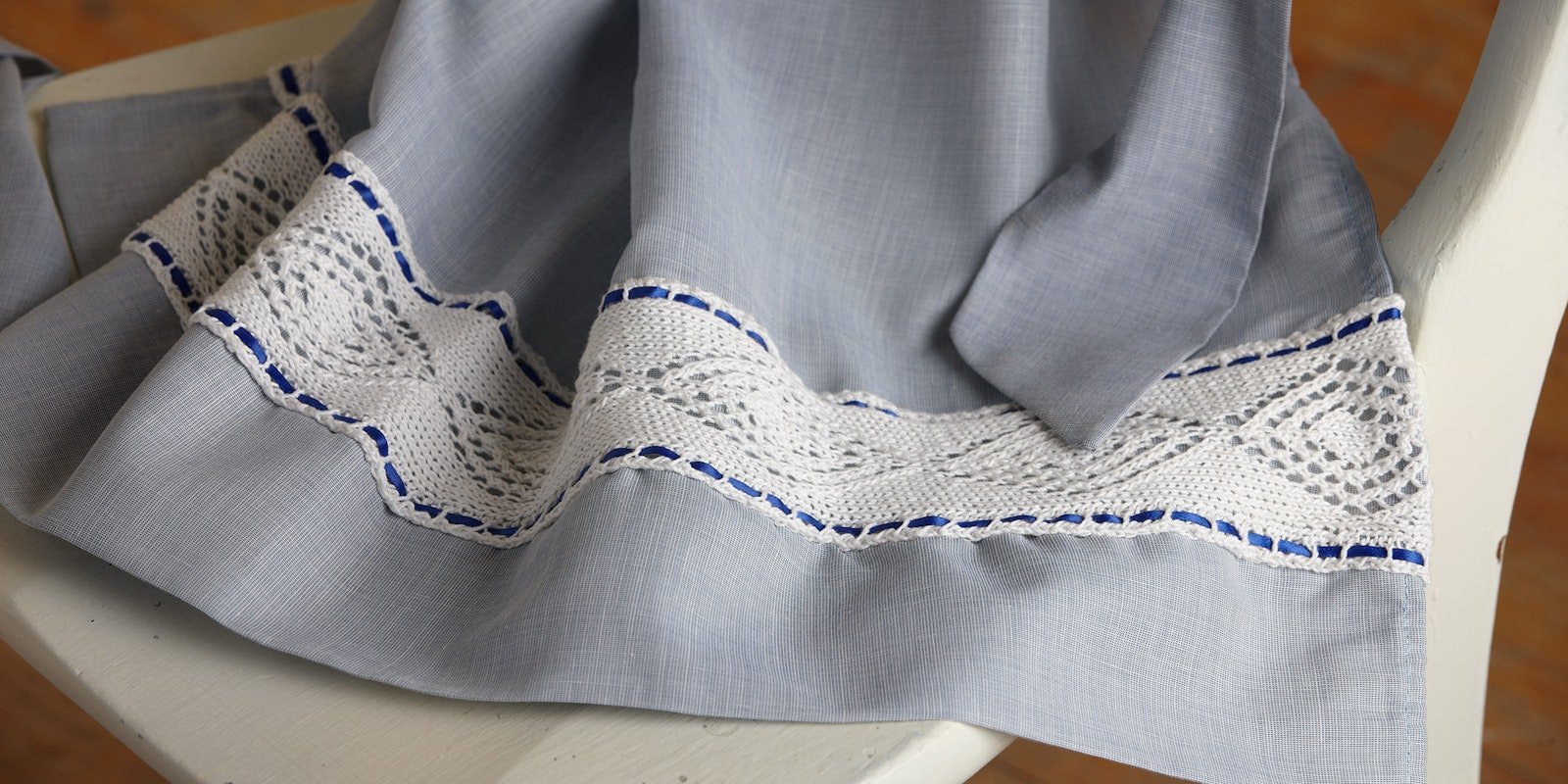Decorative aprons have been fashionable on and off for years. Ideas for personalizing what would otherwise be just a utilitarian coverall appeared in women’s magazines or were passed along from one stitcher to another. These colorful additions included many styles, techniques, and designs, all of which could be interpreted in various ways to make the decorative possibilities virtually limitless.
Cross-stitch may well be the most popular of apron embellishments. A simple technique, its basic stitch can be adapted to create striking designs on both solid and print fabrics, from familiar monk’s cloth and gingham to unusual fabrics such as dotted Swiss.
 Left to right: Blue-and-white apron with white embroidered band above hem; white apron with crocheted edging; white apron with blue and black embroidered band above hem; and blue-and-white apron with white and blue embroidered diamonds. Collection of the author.
Left to right: Blue-and-white apron with white embroidered band above hem; white apron with crocheted edging; white apron with blue and black embroidered band above hem; and blue-and-white apron with white and blue embroidered diamonds. Collection of the author.
Embroidery runs a close second. Apron kits containing preprinted fabric used to be available widely at dime and department stores as well as via mail order. Iron-on transfer patterns required little more effort or skill. Dozens of techniques are found on vintage aprons, including candlewicking, smocking, Swedish weaving (also called huck embroidery), appliqué (using felt, sequins, or fabric pictures), piecing, needle lace, and pulled-thread work, along with tatted, crocheted, or knitted edgings.
With the simplest of tools and materials, a housewife could turn a utilitarian accessory into something fanciful, whimsical, or even beautiful. Each embellished apron that survives has a story to tell; each decorative stitch in the pattern offers clues to that story.
Interested in crafting a trim for an apron or other item of clothing? This article and a companion project can be found in the July/August 2011 issue of PieceWork.
Also, remember that if you are an active subscriber to PieceWork magazine, you have unlimited access to previous issues, including July/August 2011. See our help center for the step-by-step process on how to access them.
Julia Baratta admits that of her large collection of aprons, the handmade ones are her favorite. She is always on the lookout for more and enjoys the hunt.
Originally published May 17, 2021; updated March 10, 2025.

